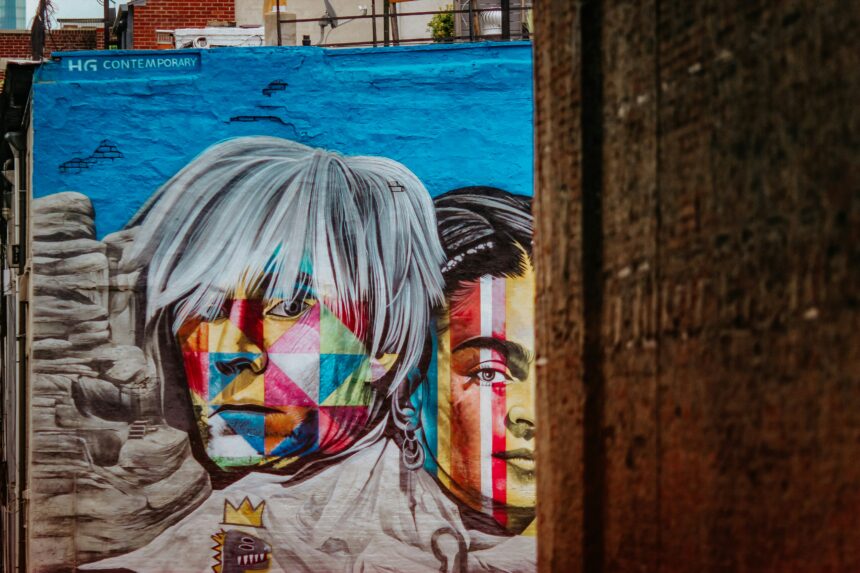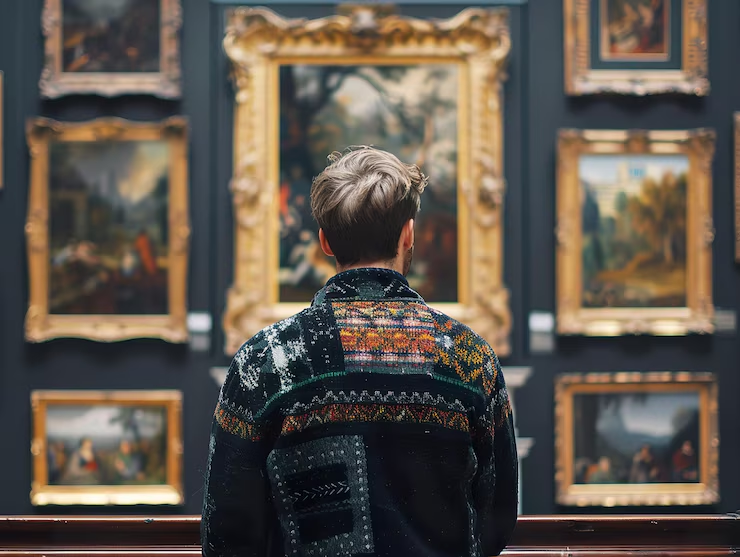AndyWarhella, a name that blends creativity and fame, has captivated the world with his unique take on art. Born as Andrew Warhola, he later became a household name, synonymous with Pop Art. From soup cans to Marilyn Monroe, AndyWarhella’s art broke barriers and brought everyday objects into the realm of fine art. His genius wasn’t just in his art but in his ability to see beauty in the ordinary and make it extraordinary.
In this blog post, we’re diving deep into the life and legacy of AndyWarhella, exploring his rise from a poor immigrant family in Pittsburgh to becoming one of the most influential artists in history. Through his work, AndyWarhella not only changed the art world but also reshaped how we view fame, consumerism, and culture. Let’s take a closer look at his journey and the fascinating world he created.
Who Was AndyWarhella? Exploring the Origins of a Cultural Icon
AndyWarhella, born Andrew Warhola on August 6, 1928, is one of the most famous artists in the world. He grew up in a poor immigrant family in Pittsburgh, Pennsylvania. Even as a child, Andy had a deep love for art and creativity. His mother encouraged his artistic talents and gave him his first camera at a young age. AndyWarhella’s journey from a small town to becoming a worldwide icon is a true story of passion, hard work, and artistic brilliance.
As he grew older, AndyWarhella moved to New York City to pursue a career in art. His talent as a commercial illustrator helped him gain recognition. But what really set him apart was his unique approach to art. He didn’t just paint pictures—he turned everyday items into something extraordinary. From Campbell’s soup cans to portraits of celebrities, AndyWarhella’s art challenged people to see beauty in things they might not have noticed before.
From Pittsburgh to Pop Art: The Early Years of AndyWarhella
In the early years of his life, AndyWarhella faced many challenges. His family was not wealthy, and they struggled to make ends meet. But Andy’s love for art kept him going. After high school, he went to college at the Carnegie Institute of Technology, where he learned more about design and art. He moved to New York City in 1949 to start his career.
In New York, AndyWarhella quickly became well-known for his illustrations. He worked for big magazines like “Glamour” and “Vogue.” But Andy didn’t just want to be a commercial artist—he wanted to create art that would make people think. This is when he started experimenting with new techniques, such as silkscreen printing, and began creating his famous works, like the Campbell’s soup cans.
AndyWarhella’s Famous Soup Cans: How Simple Objects Changed Art Forever
One of AndyWarhella’s most famous works is his Campbell’s Soup Can series. At first glance, these paintings might seem simple—just pictures of a soup can. But to Andy, these everyday items represented something bigger. They were a comment on how consumerism and advertising influenced society.
By painting the soup cans, AndyWarhella wanted to show that art could come from the ordinary things around us. He used silkscreen printing to reproduce the cans, which gave them a clean, almost mechanical look. This method was revolutionary because it removed the traditional artist’s touch. The result was art that felt mass-produced, just like the soup cans themselves.
The Factory: Inside AndyWarhella’s Creative Empire

In the 1960s, AndyWarhella created a space called “The Factory” in New York City. This was not just a studio—it was a place where art and culture came together. At The Factory, AndyWarhella worked with a team of artists, musicians, and celebrities. It became a hub of creativity, where new ideas were born every day.
At The Factory, AndyWarhella didn’t work alone. He had assistants who helped him with his projects. This team approach allowed him to create many pieces of art in a short amount of time. The Factory was a symbol of the Pop Art movement, where everyday items and images from pop culture became subjects for fine art.
Marilyn Monroe and Beyond: Understanding AndyWarhella’s Love for Celebrities
AndyWarhella had a fascination with celebrities. He believed that famous people, like Marilyn Monroe, represented the American dream. They were symbols of beauty, success, and fame. This is why Andy created some of his most famous works, like the Marilyn Monroe series.
Through his art, AndyWarhella explored how fame affected people. He used bright, bold colors and repeated images to show how celebrities were constantly in the public eye. He wanted to ask a big question: What is it about fame that makes people obsessed with these public figures?
How AndyWarhella Used Silkscreening to Redefine Art
One of the most important techniques that AndyWarhella used in his art was silkscreen printing. This method allowed him to create multiple copies of the same image. It was inspired by commercial printing, where large quantities of items are made in a short amount of time. AndyWarhella used silkscreening to create his famous series, such as the portraits of Marilyn Monroe and the dollar bills.
Benefits of Silkscreen Printing in AndyWarhella’s Art:
- Mass Production: This technique allowed Andy to produce multiple works quickly, much like mass production in factories.
- Repetition: By repeating the same image, Andy made a statement about how everyday objects and celebrities were constantly repeated in the media.
- Iconic Imagery: It allowed Andy to focus on famous images, like the Campbell’s soup can or dollar bills, and turn them into art.
Art, Fame, and Consumerism: The Timeless Appeal of AndyWarhella
AndyWarhella’s art was not just about the paintings themselves—it was about what they represented. His work often dealt with themes of fame, celebrity, and consumerism. AndyWarhella was one of the first artists to use popular culture as the basis for fine art. He questioned the values of society, asking why we worship celebrities and buy products without thinking.
Even today, AndyWarhella’s art is still relevant. In an age where social media and consumerism are a big part of our lives, his work serves as a reminder of how fame and products are everywhere. AndyWarhella’s ability to capture these themes in his art makes him one of the most important figures in modern art.
AndyWarhella’s Legacy: Why His Art Still Inspires Today’s Artists
AndyWarhella’s legacy lives on today, inspiring countless artists around the world. His approach to art—using mass production techniques, focusing on consumer culture, and making art from the ordinary—has influenced many modern artists. His work continues to be shown in museums, and his ideas still shape how we think about art.
Artists today admire AndyWarhella for his ability to take something simple, like a soup can, and turn it into a masterpiece. His work challenges us to see the world around us differently. Whether it’s through pop culture references or modern media, AndyWarhella’s influence is felt in art everywhere.
From Controversy to Celebration: The Complex Life of AndyWarhella

AndyWarhella’s life was filled with both controversy and celebration. He was not just an artist—he was a celebrity in his own right. People loved him, but they also criticized him for his commercial approach to art. Despite this, AndyWarhella embraced fame and saw it as an important part of his career.
Key Moments in AndyWarhella’s Life:
- The Assassination Attempt: In 1968, Andy was shot and nearly killed by a woman named Valerie Solanas. This event changed his life and made him more cautious about his public persona.
- The Factory Scene: His studio, The Factory, became famous for its wild parties, experimental art, and collaboration with famous people.
Even with all the controversy, AndyWarhella’s art remains a lasting symbol of pop culture and modern art.
Conclusion:
AndyWarhella was not just an artist, but a cultural icon who changed the way we look at art, fame, and everyday things. His use of popular images, like soup cans and celebrities, made art more accessible to everyone. Through his unique approach and creative vision, AndyWarhella showed that art could come from the most ordinary things around us, and it could still be powerful.
Even though AndyWarhella passed away many years ago, his art and ideas continue to inspire artists and people all around the world. His legacy reminds us that creativity has no limits, and even the simplest objects can become masterpieces. Today, his work still speaks to us and challenges us to see the world in new and exciting ways.
FAQs:
Q: Who was AndyWarhella?
A: AndyWarhella, born as Andrew Warhola, was a famous artist known for his pop art, which included things like soup cans and celebrity portraits.
Q: What is AndyWarhella famous for?
A: AndyWarhella is famous for his Pop Art, including his iconic Campbell’s Soup Can paintings and portraits of celebrities like Marilyn Monroe.
Q: How did AndyWarhella create his artwork?
A: He often used a technique called silkscreen printing, which allowed him to make multiple copies of the same image, similar to mass production.
Q: What is The Factory?
A: The Factory was AndyWarhella’s creative studio in New York City where he worked with other artists, celebrities, and musicians to create his art.
Q: How did AndyWarhella influence modern art?
A: AndyWarhella changed art by making it more about popular culture and everyday items. His work inspired many artists to focus on things like consumerism and celebrity.

